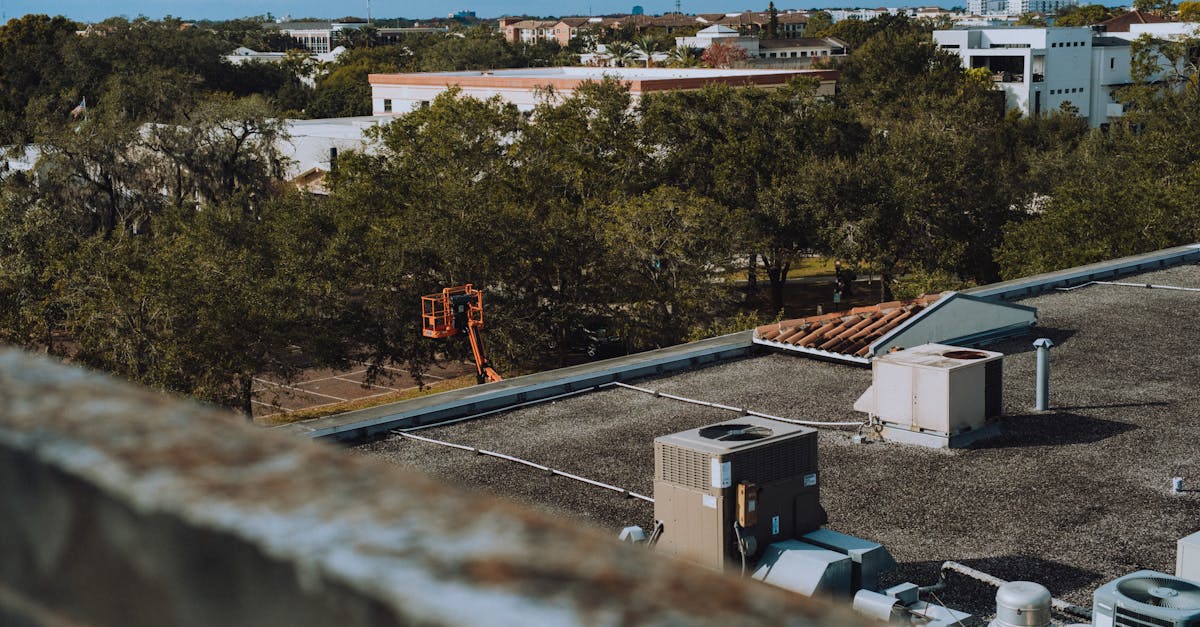What damages roof the most?

Table Of Contents
Tree Overgrowth
Overgrown trees can pose significant risks to roofs. Branches that extend too close can scrape against roofing materials, leading to wear and tear over time. This constant friction can damage shingles, compromise underlayment, and ultimately result in leaks. Additionally, leaves and debris from such trees can accumulate in gutters, causing blockages that lead to water overflow and potential structural damage.
When branches become heavy with rain or snow, the added weight increases the likelihood of them breaking off and falling onto the roof. These falling branches can cause immediate physical damage to roofing materials and can even impact the integrity of the underlying structure. Routine maintenance, including tree trimming, can mitigate these risks and prolong the lifespan of a roof.
Damage Caused by Falling Branches
Falling branches from nearby trees can cause significant harm to a roof, especially during storms or high winds. The weight of the branches can create punctures in roofing material, leading to leaks and water damage over time. Even smaller branches, when repeatedly struck against the surface, can wear down shingles and expose the underlying structure to the elements.
In addition to structural impact, the debris left by fallen branches can accumulate on the roof, creating a breeding ground for moisture. This moisture can contribute to the growth of mold and algae, further compromising the integrity of the roofing system. Homeowners must regularly inspect their roofs for signs of damage and consider tree trimming to prevent potential threats from overhanging branches.
Animal Infestations
Animals can cause significant harm to roofs, particularly when they find a way into the attic or insulation spaces. Rodents, raccoons, and squirrels are common intruders that can chew through roofing materials, leading to structural vulnerabilities. These critters not only compromise the integrity of the roof but also create potential entry points for water, which can cause further damage. Their nesting habits can obstruct drainage systems, presenting more hazards as leaves and debris accumulate.
Pests like termites can silently wreak havoc on wooden roofing structures. These insects bore into the wood, weakening it over time and making it prone to collapse. Bird droppings can also be corrosive when they accumulate, damaging materials and leading to deterioration. Failing to address these infestations can result in extensive repairs, often requiring complete roof replacements due to compromised safety and longevity.
Structural Damage from Pests
Pests such as termites, carpenter ants, and rodents can severely compromise the structural integrity of a roof. These creatures often seek shelter within the materials that make up a home, including rafters, shingles, and insulation. Termites, in particular, can cause significant destruction, consuming wood from the inside out, while carpenter ants hollow out timber, creating weak points that may go unnoticed until it's too late.
Additionally, rodents can create nests in insulation or within roofing materials, leading to further deterioration. They might also chew through wires, posing a fire hazard. The presence of pests not only leads to immediate damage but also encourages moisture retention, which can contribute to mold growth. Homeowners need to be vigilant in pest prevention and to address any signs of infestations promptly to protect their roofs from long-term damage.
Chemical Exposure
Various pollutants in the environment can negatively impact roofing materials. Acid rain, which forms when atmospheric pollutants mix with moisture, can erode shingles and lead to long-term degradation. Over time, this erosion not only affects the appearance of the roof but also increases vulnerability to leaks and structural damage.
Harsh cleaning agents used in maintenance routines can also pose a risk. Many common household cleaners contain chemicals that can degrade roofing materials like asphalt shingles, metal flashing, or tile surfaces. Prolonged exposure to these substances can weaken the roof's integrity, making it essential to choose cleaning products that are safe for use on roofs to minimize potential harm.
Effects of Pollutants and Harsh Cleaning Agents
Exposure to pollutants can significantly affect the integrity of roofing materials. Contaminants like soot, acid rain, and airborne chemicals may deteriorate shingles and compromise their protective qualities. Over time, this degradation can lead to leaks and other serious issues.
Harsh cleaning agents often used to maintain roofs can also cause damage. Many of these chemicals contain corrosive elements that can strip away protective coatings, weaken the structure, or alter the surface appearance. Using such products without proper precautions or guidance can further exacerbate existing problems, increasing the risk of long-term damage.
FAQS
What are the main factors that damage roofs?
The main factors that damage roofs include tree overgrowth, animal infestations, and chemical exposure. Each of these elements can contribute to various forms of damage, such as structural issues or deterioration.
How can tree overgrowth affect my roof?
Tree overgrowth can lead to damage through falling branches, which can puncture or scrape the roofing material. Additionally, overhanging branches can encourage the growth of moss and algae, trapping moisture that can lead to further deterioration.
What types of animals are known to cause roof damage?
Common animals that can cause roof damage include squirrels, raccoons, and birds. These animals can create holes, nests, or other forms of damage that compromise the integrity of the roof.
What are the signs of structural damage from pests?
Signs of structural damage from pests include visible holes or gaps in the roof, droppings, nesting materials, and increased insect activity. If you notice any of these signs, it’s important to investigate further and consider professional help.
How do pollutants and harsh cleaning agents affect roofs?
Pollutants such as acid rain can degrade roofing materials over time, while harsh cleaning agents can strip away protective coatings. Both can lead to accelerated wear and tear, decreasing the lifespan of your roof.
Related Links
What damages roof the most?10 Common Roof Maintenance Mistakes to Avoid